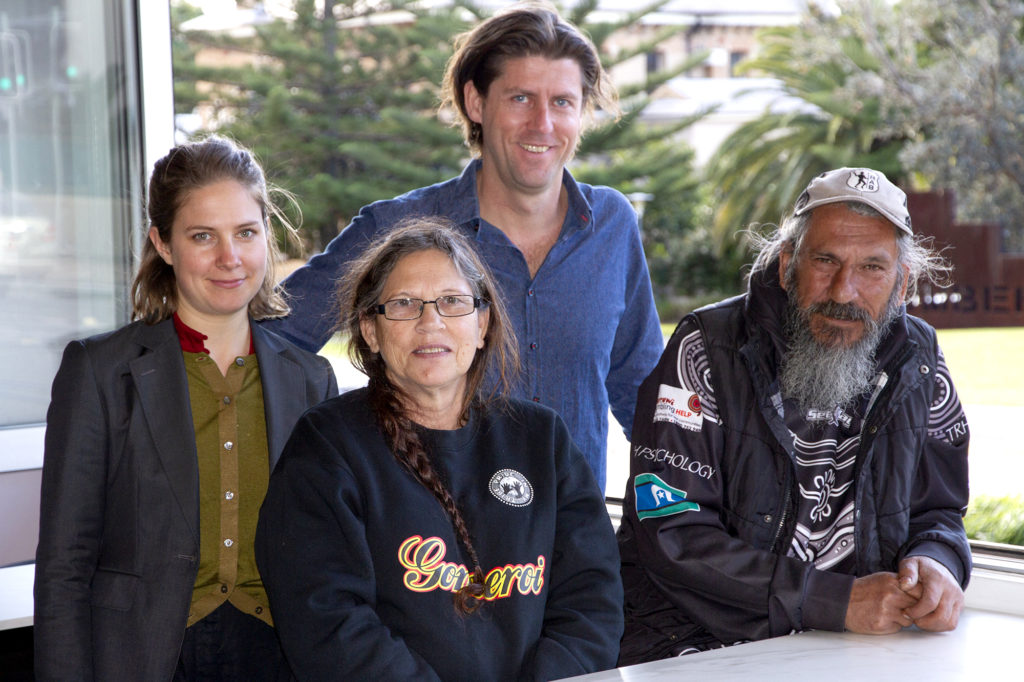Despite the acknowledged “immeasurable” cultural value of Significant Areas of Aboriginal cultural heritage within the footprint of the approved Shenhua Watermark open cut coal mine, the Federal Environment Minister’s decision not to protect the sites from the mine was lawful, the Federal Court has decided today.
Environmental Defenders Office acted for Veronica “Dolly” Talbott, as a member of the Gomeroi Traditional Custodians, in a challenge under the Aboriginal and Torres Strait Islander Heritage Protection Act 1984 (Cth) (ATSIHP Act) to the lawfulness of the Minister’s decision not to grant protection to several Significant Areas of Aboriginal cultural heritage on the Liverpool Plains, northwest NSW.
The Minister acknowledged that the development of the mine would destroy or desecrate the Significant Areas but concluded that the mine’s potential economic and social benefits outweighed their heritage value. This decision was lawful, the Federal Court decision finds.

David Morris, CEO, Environmental Defenders Office said, “EDO has been privileged to represent Dolly Talbott in this challenge to the Minister’s decision to protect coal mining over a site of significant importance to First Nations peoples. We share her disappointment.
“We think this outcome highlights the fact that our federal culture and heritage laws are not fit for purpose. The laws are designed to protect places of significance to Aboriginal people – yet the decision shows that the ATSIHP Act allows the expectation of short-term economic outcomes from mining to outweigh the protection of culturally important sites. The Court has found that the Minister was permitted to consider very broad, non-indigenous, matters in deciding to refuse protection for these ancient sites of immeasurable value.”
Dolly Talbott expressed her disappointment with the result but said her focus has not wavered from protecting the Gomeroi sacred places.
“It remains vitally important to us to protect our sacred places, songline and burials of our ancestors, which is a sacred place to us, a place which holds our ancestors’ footprints, their legacy to us.
“If anything,” Dolly said, “the decision demonstrates the abject failure of the ATSIHP Act to provide meaningful protection for areas of particular significance to Aboriginal people.”
Dolly Talbott continued: “The Gomeroi Traditional Custodians representing over 600 Gomeroi people and 31 Aboriginal Nations have made a new application for protection of these highly significant and sacred areas to the Minister under the ATSIHP Act. This application contains substantial new information. We are hopeful the Minister will carefully consider this application and exercise her powers to declare protection of our areas of high cultural significance.
“Especially after the destruction of the Juukan caves, there’s an urgent need to protect the places of significance to Aboriginal people. If this mega-mine proceeds, our interlinked sacred places will be completely destroyed and obliterated from the landscape. We will no longer be able to read our Country, share our sacred places with our children and grandchildren. Our ancestors’ burials and their footprints, their legacy to us, will be lost – lost forever.”
“As the oldest living culture on the planet, surely this should be of utmost importance to Australia?” Dolly said.
David Morris said, “Our client will consider her legal options from here and we remain hopeful that the Minister will recognise the imperative need to protect this sacred site (which she has already found to be of ‘immeasurable value’) in response to Dolly’s new application.”
Background
The Gomeroi Traditional Custodians first lodged an application for protection of the Significant Areas in April 2015 under s.10 of the Aboriginal and Torres Strait Islander Heritage Protection Act 1984 (Cth) (ATSIHP Act). The purpose of the ATSIHP Act is:
“the preservation and protection from injury or desecration of areas and objects in Australia and in Australian waters, being areas and objects that are of particular significance to Aboriginals in accordance with Aboriginal tradition.”
The Minister acknowledged that the development of the mine would destroy or desecrate the Significant Areas but concluded that the mine’s potential economic and social benefits outweighed their heritage value.
The Significant Areas, which are within the footprint of the mine, are an important cultural junction and part of a broader Aboriginal cultural landscape. They include sacred places and significant ceremonial corridors. The interlinked sites also include, but are not limited to, large grinding groove sites, scarred trees and artefactual objects of high order significance irreplaceable to the Gomeroi Traditional Custodians. If the mega-mine of three open-cut pits went ahead, not only would the existing landscape be destroyed but it would be replaced by a new, mine-created landscape.





